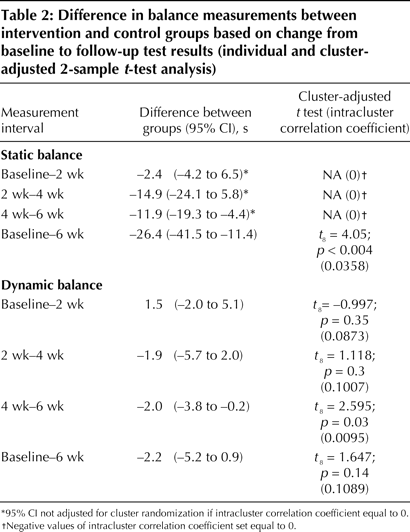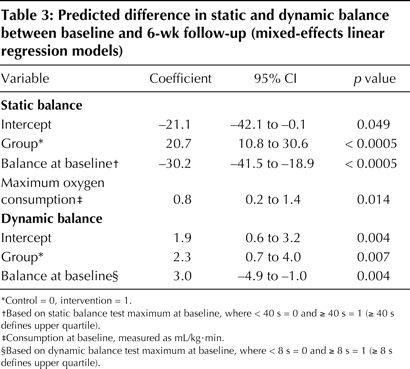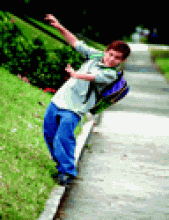Article Figures & Tables
Figures
Fig. 1: Recruitment and allocation of schools and students to study groups. Subjects in the intervention group underwent a 6-week home-based proprioceptive balance-training program using a wobble board. All of the subjects underwent timed balance tests at baseline and at 2, 4 and 6 weeks. They were also asked to report sports-related injuries over the 6-month study period.
Fig. 2: Geometric means for timed static balance test. Each subject was asked to stand on one leg, with eyes closed, on the gym floor. Time was recorded when the subject's balance was lost, eyes opened, or the maximum allowable time (180 seconds) was reached.
Fig. 3: Geometric means for timed dynamic balance test. Each subject was asked to stand on one leg, with eyes closed, on a balance pad. Time was recorded in the same manner as with the static test.


















